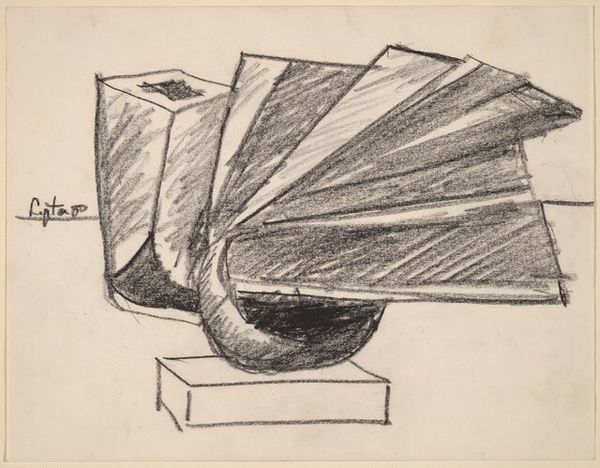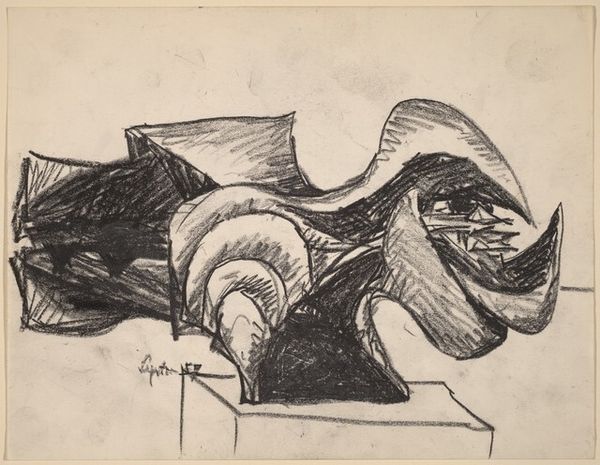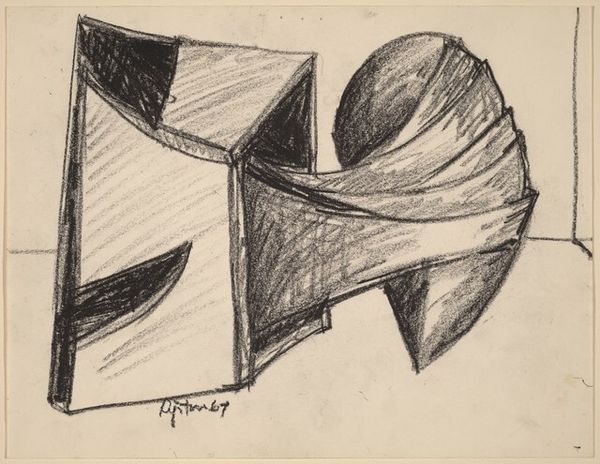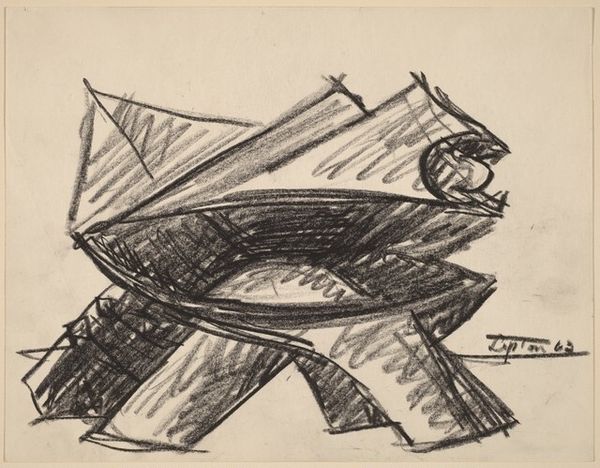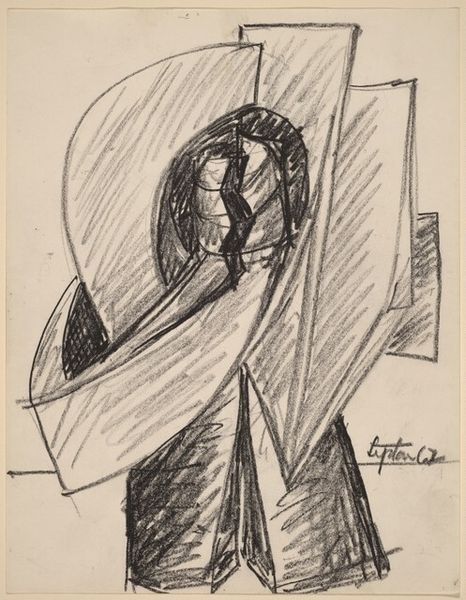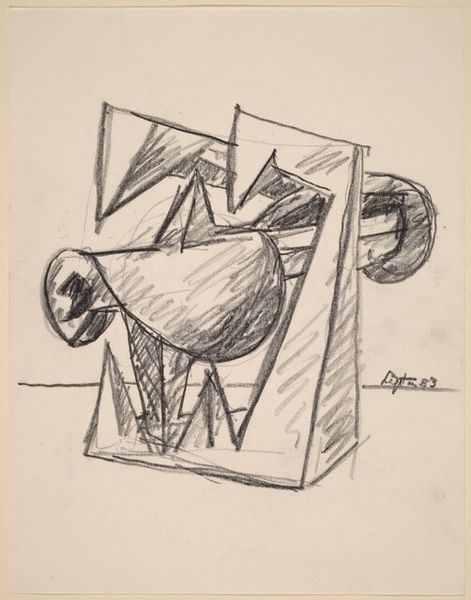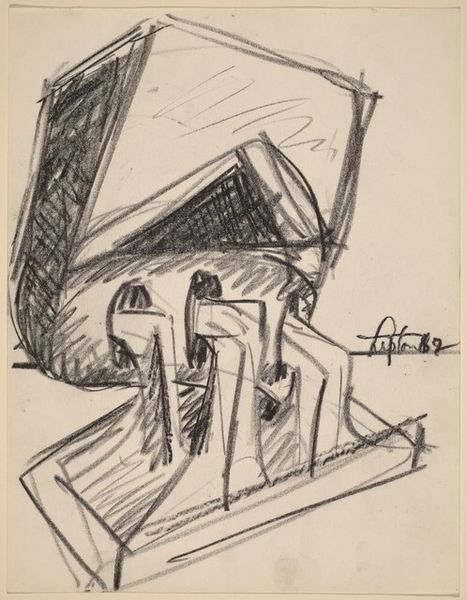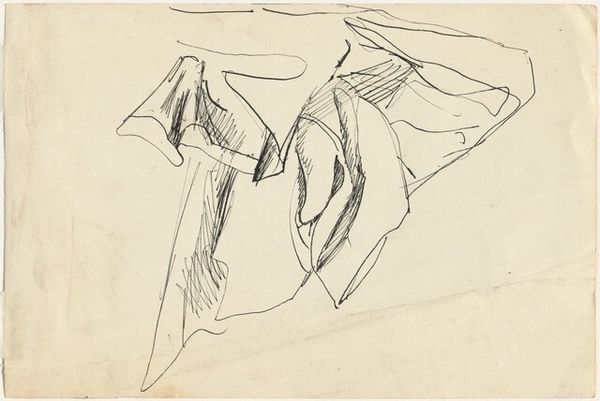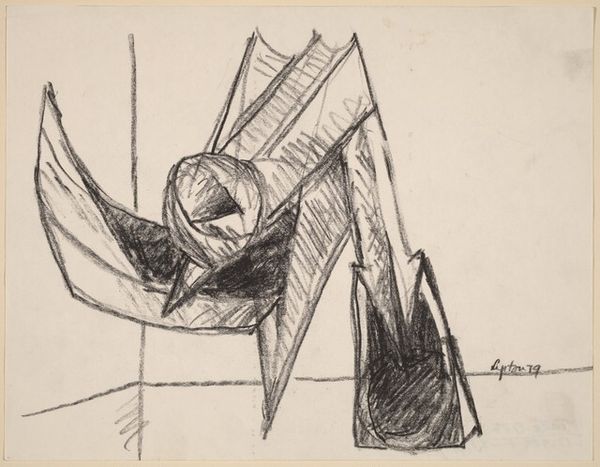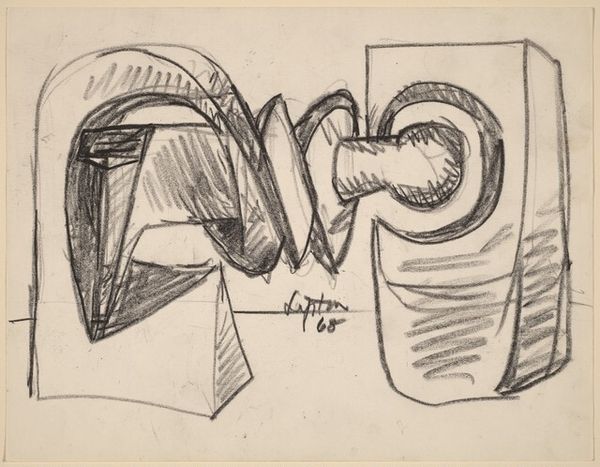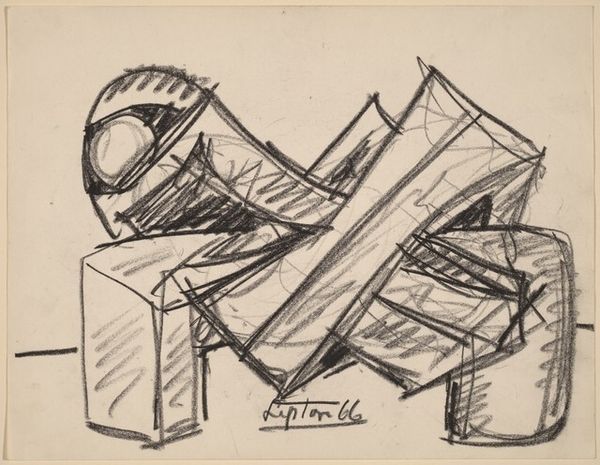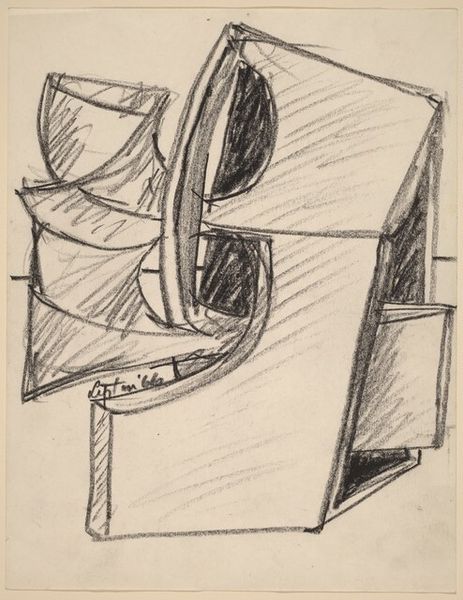
drawing, maquette, sculpture, graphite
#
abstract-expressionism
#
drawing
#
maquette
#
pencil sketch
#
sculpture
#
abstraction
#
graphite
#
modernism
Dimensions: sheet: 21.59 × 27.94 cm (8 1/2 × 11 in.)
Copyright: National Gallery of Art: CC0 1.0
Curator: We're looking at a graphite drawing titled "Study for 'Chrysalis'," created in 1957 by Seymour Lipton, an artist deeply involved in Abstract Expressionism. Editor: The image appears monumental even as a study. The graphite, smudged in places, builds volume suggestive of substantial weight and texture. The spiraling forms evoke a feeling of latent power. Curator: Indeed. Lipton was fascinated by the interplay of inner and outer forms, often working in bronze, and this drawing captures his exploratory process for realizing those concepts. It really encapsulates modernism's emphasis on the artistic process as vital to the finished artwork. The "chrysalis" concept, of course, refers to that transformative stage of metamorphosis... Editor: A powerful symbol across cultures! In psychoanalytic terms, we could see the chrysalis as representative of psychic gestation. Note how Lipton uses the void at the center, a cave-like form that speaks to themes of emergence, rebirth, and concealed potential. The spiral, echoing natural growth patterns and cycles of time. It's almost as though we're invited to participate in the becoming. Curator: Right, it's all about process. Consider how he moves from drawing to maquette to the final sculpture. Each iteration allows him to wrestle with material, technique, and labor itself, ultimately questioning traditional sculptural norms. Editor: I can almost feel the heft and the cool surface of metal, despite it being just graphite on paper. Curator: This drawing opens a fascinating window onto Lipton's creative evolution. Editor: It leaves us pondering the metamorphic potential held within forms and within ourselves.
Comments
No comments
Be the first to comment and join the conversation on the ultimate creative platform.
